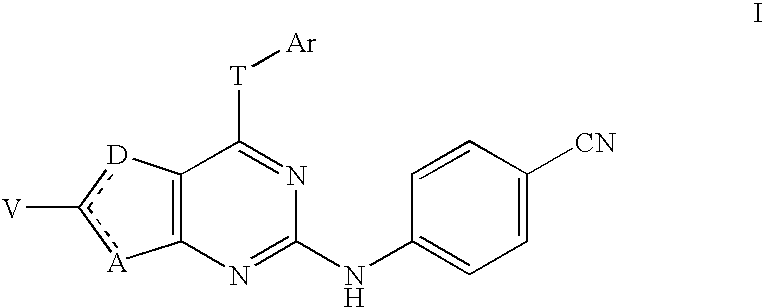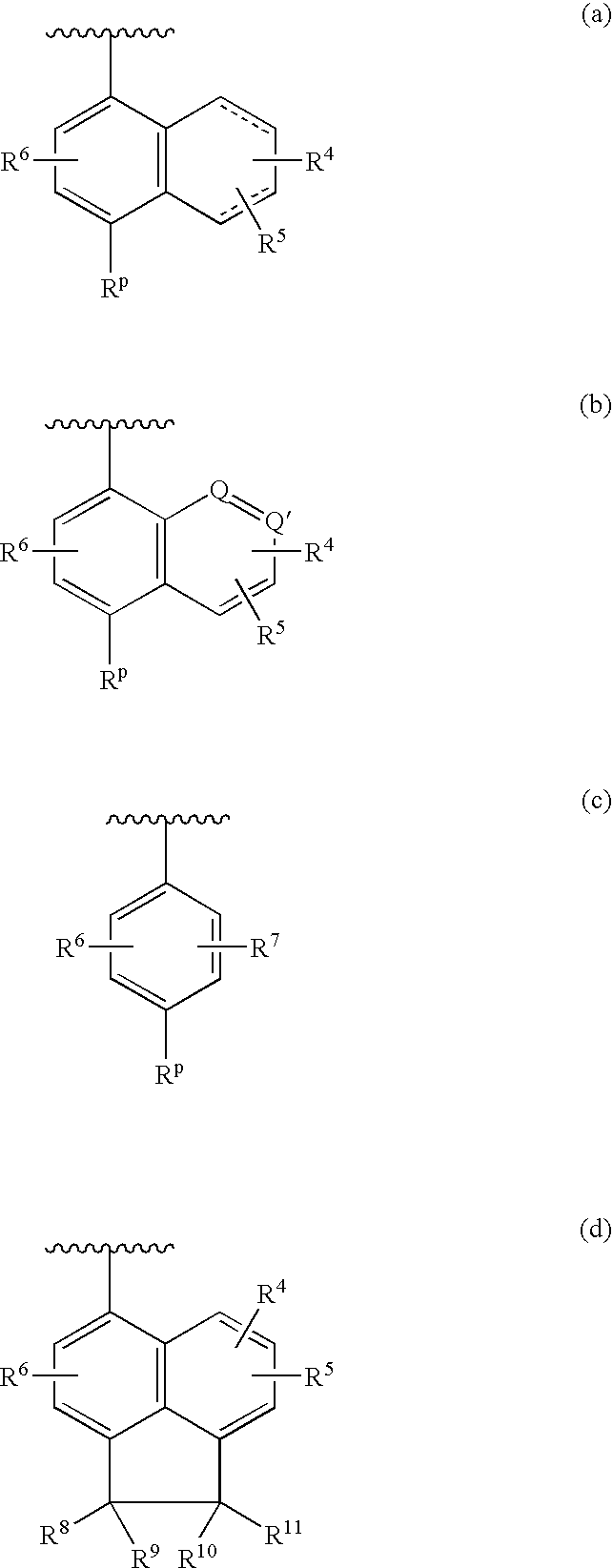4-cyanophenylamino-substituted bicyclic heterocyclic compounds as HIV inhibitors
a technology of cyanophenylaminosubstituted bicyclic heterocyclic compounds and hiv inhibitors, which is applied in the active ingredients of heterocyclic compounds, biocide, organic chemistry, etc., can solve the problems of single-drug treatment being hampered, and achieve the effect of inhibiting the replication of hiv
- Summary
- Abstract
- Description
- Claims
- Application Information
AI Technical Summary
Benefits of technology
Problems solved by technology
Method used
Image
Examples
example 1
Thieno[2,3-d]pyrimidine-2,4(1H,3H)-dione
[0262]
[0263]To a stirred solution of methyl-2-aminothiophene-3-carboxylate (2.03 g, 12.9 mmol) in acetic acid (65 mL) and water (6.5 mL) was added a solution of potassium cyanate (3.14 g, 38.7 mmol) dissolved in water (10.4 mL) dropwise via syringe. The reaction was stirred at room temperature for 15 h, upon completion of the reaction; the reaction mixture was concentrated to 75% and filtered off white solid. To the solid was added 6% aqueous sodium hydroxide (16 mL) and refluxed for 2 h. After cooling to room temperature, the solution was acidified using 12N HCl to pH=6. The resultant precipitate was filtered, washed with water and dried in a vacuum oven overnight to give 546 mg (25%) of the title compound as an orange solid which was used without any further purification:
[0264]1H NMR (DMSO, 300 MHz) δ 7.06 (d, J=5.7 Hz, 1H), 7.1 (d, J=5.7 Hz, 1H), 11.1 (broad s, 1H), 11.9 (broad s, 1H).
example 2
2,4-Dichlorothieno[2,3-d]pyrimidine
[0265]
[0266]A mixture of thieno[2,3-d]pyrimidine-2,4(1H,3H)-dione (100 mg, 0.59 mmol) and phosphonyl chloride (2 mL, 21.5 mmol) was heated at 116° C. for 3 h. Upon completion of the reaction, the reaction mixture was poured into ice and extract with ethyl acetate 3 times. The combined organic layers were washed with brine, dried over Na2SO4, filtered and concentrated in vacuo. Purification by column chromatography, eluting with Hexanes / Ethyl Acetate (9:1) afforded the product as a white solid (48.1 mg, 40%):
[0267]1H NMR (DMSO, 300 MHz) δ 7.6 (d, J=6.3 Hz, 1H), 8.13 (d, J=5.7 Hz, 1H).
example 3
2-Chloro-4-(mesityloxy)thieno[2,3-d]pyrimidine
[0268]
[0269]A stirred suspension of NaH (9.5 mg, 0.24 mmol) in dry THF (1 mL) was added 2,4,6-trimethyl phenol (32.1 mg, 0.24 mmol) and stirred at room temperature for 30 min under Argon. The reaction mixture was added to a solution of 2,4-dichlorothieno[2,3-d]pyrimidine (48.1 mg, 0.24 mmol) in dry THF (1.5 mL) at 0° C. and allow it to slowly warmed up to room temperature. After stirring the reaction for 4 h, the resulting mixture was diluted with water and washed with EtOAc. The combined organic layers were washed with water, brine, dried over Na2SO4, filtered and concentrated in vacuo. The crude product was purified by column chromatography, eluting with hexanes / ethyl acetate (9:1) to give the product as a white solid (71 mg, 97%):
[0270]1H NMR (DMSO, 300 MHz) δ 2.0 (s, 6H), 2.27 (s, 3H), 6.98 (s, 2H), 7.65 (d, J=6.0 Hz, 1H), 7.75 (d, J=5.7 Hz, 1H).
PUM
| Property | Measurement | Unit |
|---|---|---|
| molecular weight | aaaaa | aaaaa |
| temperature | aaaaa | aaaaa |
| temperature | aaaaa | aaaaa |
Abstract
Description
Claims
Application Information
 Login to View More
Login to View More - R&D
- Intellectual Property
- Life Sciences
- Materials
- Tech Scout
- Unparalleled Data Quality
- Higher Quality Content
- 60% Fewer Hallucinations
Browse by: Latest US Patents, China's latest patents, Technical Efficacy Thesaurus, Application Domain, Technology Topic, Popular Technical Reports.
© 2025 PatSnap. All rights reserved.Legal|Privacy policy|Modern Slavery Act Transparency Statement|Sitemap|About US| Contact US: help@patsnap.com



